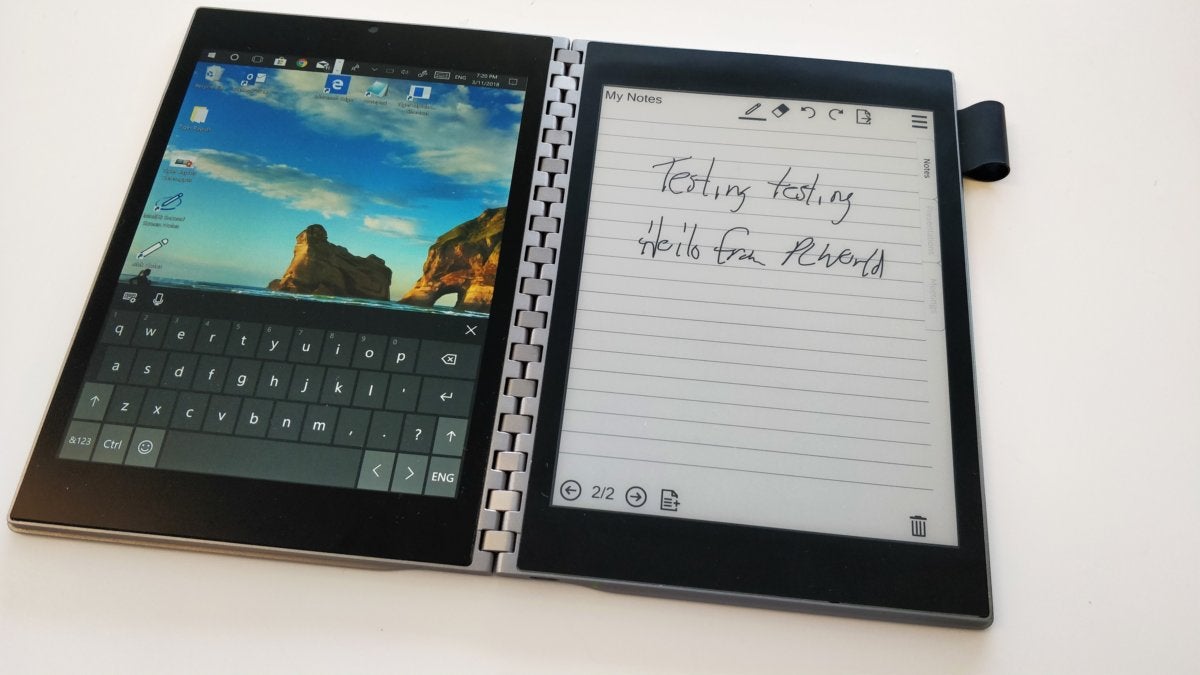We peeked at the future of PCs—at least, Intel’s vision of it—in a large room called the Client Experience Design Studio at the company’s Santa Clara, California headquarters.
Rows of tables fill the space, many of them draped with black cloth to conceal Intel’s other secrets from public view. On one table, though, Intel has revealed all: a pair of prototype PC devices with not one, but two screens, surrounded by a number of iterative prototypes that led to the final result.
Meet Tiger Rapids, the two-screen PC for your hand
One of the prototype devices has been blessed with a public code name: Tiger Rapids, which might be called today’s two-screen PC. This is no pie-in-the-sky concept: At least two designs from Asus and Lenovo at the Computex show in Taipei will be inspired by the Tiger Rapids design, explains Gregory Bryant, senior vice president and general manager of Intel’s Client Computing Group. Intel has worked about two years to refine this design, which it has provided to select partners.
Bryant explains how the prototypes express a design goal he defines as adaptable form factors. "Conceptually, it’s not a one-size fits all world," Bryant says. "You’re going to see secondary products of different shapes and sizes, people are going to do secondary displays, obviously we’re going to work on longer-term things like bendables and foldables."
Bryant emphasized that the motivation behind these designs was to make the PC bend to its user, not the other way around. "It’s not doing it because you can do it. It’s creating these adaptable form factors that fit the work that you’re trying to do," Bryant added.
Competing against pen and paper
Intel’s lab is led by Murali Veeramoney, a soft-spoken but passionate man who is eager to describe in detail exactly what his small team has accomplished. (A second lab resides in Hillsboro, Oregon.) From among the prototypes of metal and plastic, he holds up something you wouldn’t normally expect to see at a technology company: a traditional pen-and-paper Moleskine notebook.
“This is a purpose-built device,” Veeramoney said, scribbling on the lined paper with a pen. “There is only one single thing you can do. So the combination of a purpose-built device with a multi-function device is what we wanted to bring.”


No comments:
Post a Comment